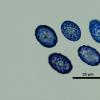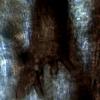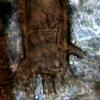
05-01-2018 20:40
 Chris Yeates
Chris Yeates
Bonsoir tousI expected this collection to be a str

06-01-2018 18:56
 Andgelo Mombert
Andgelo Mombert
Bonsoir à tous,Habitat : dans un tapis de mousses

03-01-2018 22:23
 Rubén Martínez-Gil
Rubén Martínez-Gil
Hola a todos. Subo unas fotos de una Melastiza en

06-01-2018 10:53
Me mandan desde Galicia este materialHe hecho vari

05-01-2018 23:12
Small, but crowded, on Fagus.Spores 15-17 x 2 my.N

04-01-2018 11:39
Erwin GruberDear colleages, i have been absent again for a whi

02-09-2017 18:34
 Nicolas VAN VOOREN
Nicolas VAN VOOREN
Bonjour.Je cherche une copie PDF de cet article:Di

03-01-2018 19:41
 Matthias Mann
Matthias Mann
Dear specialists, I found the following in Austria
Je repasse, dans la clé de Schumacher (The genus Scutellinia (Pyronemataceae) ; Opera Botanica 101, Copenhagen, 1990, Printed in Denmark by AiO print Ltd., Odense), une collection (cKc0647) initialement déterminée « Scutellinia torrentis ». Avec l'aide de Nicolas et de Bernard, je constate que ce n'est pas le cas ; et je les en remercie.
Macro
Apothécie : 2-8 (9) mm Ø, orange à orange-rougeâtre, sessile, distinctement disciforme, extérieur revêtu de poils raides, brunâtres à noirs
Face externe : couverte modérément à généreusement de poils bruns noirs, bordant la marge comme des cils
Hyménophore : lisse, rouge à rouge vif, orangé
Micro
a) Ascospores ellipsoïdes à étroitement ellipsoïdes, de verruqueuse à pustulo-crêtées, à tuberculeuse, ornées de petits verrues (tubercules) arrondies 0,5-1,0 µm de haut, à contenu pluriguttulé, sans paroi externe détendue lorsque chauffée dans le bleu Coton lactique
(15,1) 15,2-16,7 (16,8) × (8,5) 9,2-10,4 (11,4) µm
Q = (1,4) 1,5-1,76 (1,8); N = 25
Me = 16 × 9,7 µm; Qe = 1,6
(Piximètre, formule classique; mesures issues d'une sporée, dans bleu Coton lactique
b) Paraphyses : surpassant de 12,5-30 µm les asques en moyenne, spatulées à longuement claviformes, septées, avec contenu granulaire hyalin dans l'eau glycérinée 15%, 210-230 x 5-8 µm en moyenne
c) Asques : longuement cylindriques, octosporés, unisériés, iodonégatifs, 190-275 × 12-15 µm en moyenne
d) Poils marginaux : bruns, aigus, entre 5 et 12 septa, flexueux, s'atténuant légèrement vers la base, majoritairement bifourchue, parfois trifourchue 200-±>700 x 17-20 µm
e) Biotopes : pousse sur écorce de feuillus en décomposition (Fagus)
Je vous remercie,
Claude
The spores are quite small which limits the number of species but does fit with S vitreola. The ornamentation is about right and the length and rooting of the hairs is close. It is not a species I have seen but check out Schumachers description.
Mal
I reread the description of S. vitreola in Schumacher's key, and I agree with you, the elements are quite similar as well as the measurements. On page 71 of Schumacher's article, the ascospores of S. vitreola are well represented, and I find a certain resemblance to that of my collection.
Is the thickness of the hair wall (hair base) important here? My collection is 4-6 ?m thick. However, it would have been better for me to study this collection on the fee; I will therefore resume in the future. Which also explains why I did not study the excipulum.
Would it be more prudent to name this collection (cKc0647) Scutellinia group vitreola, provisionally? What is the standard to follow?
Best,
Claude
Although Schumacher has the hair wall as 3.5-5 I think yours are close enough.
I would say the spore shape size and ornamentation along with the hair size and root structure are far more important so I feel there are no other species that are a better fit than S vitreola.
I would be happy to record it as S vitreola but others may disagree, I find with this wonderful group that specimens often have features which are not quite the perfect match we would like so without resorting to DNA it is often necessary to choose the best fit.
Mal
PS you could try this provisional interactive key http://myfg.org.uk/tombiovis/tombiovis-1.3.2/scutellinia.html
I fully understand your point of view and I share it. Sometimes I tend to want to stick to the description of the monograph too much; but we are studying the living, so to notice discrepancies is quite normal, within the limits of the possible. Just like you, I give the name S. vitreola; and I thank you for your help. In addition, I find the interactive key very successful; a beautiful design and very well designed.
Best
Claude





